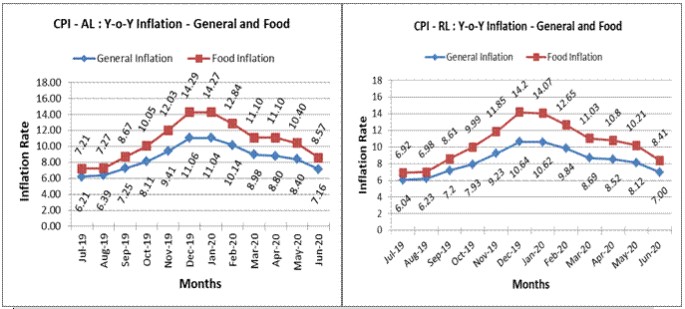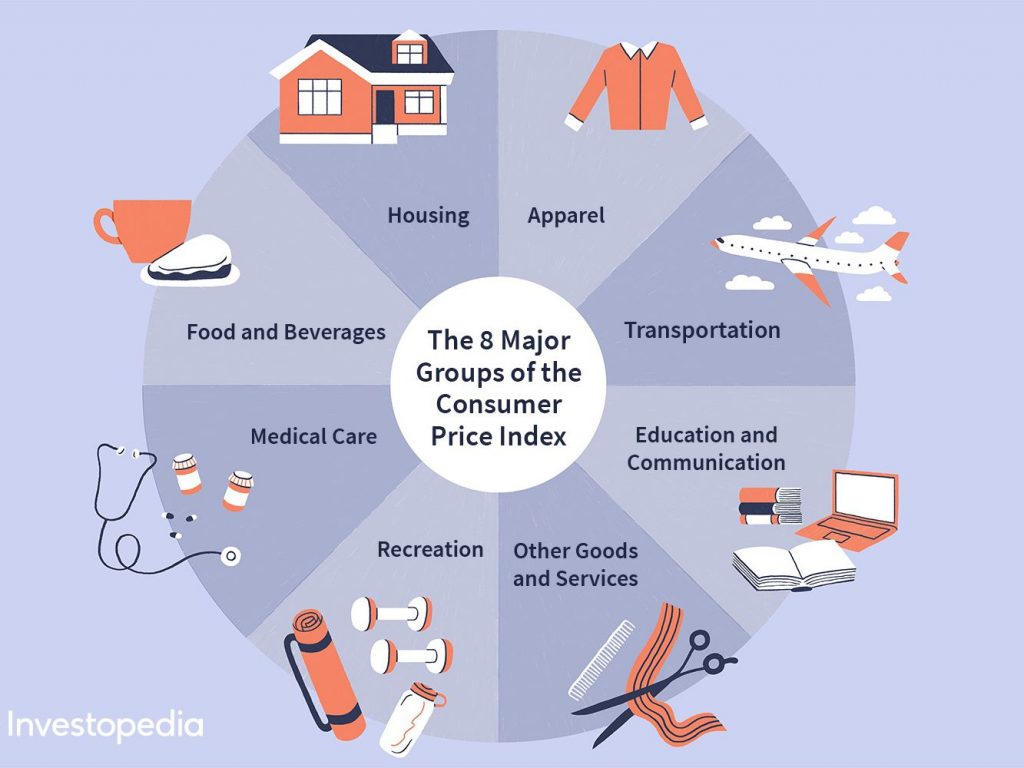Contents
- CPI for Agricultural and Rural Labourers
- Consumer Protection Act, 2019
- EV Charging Plaza and RAISE Launched
- Zoram Mega Food Park
CPI FOR AGRICULTURAL AND RURAL LABOURERS
Focus: GS-III Indian Economy
Why in news?
The All-India Consumer Price Index Numbers for Agricultural Labourers and Rural Labourers for the month of June, 2020 decreased by 1 points each.
Details

The major contribution towards the fall in general index of Agricultural Labourers and Rural Labourers came from food.
Consumer Price Index (CPI)
- Consumer Price Index (CPI) is the measure of changes in the price level of a basket of consumer goods and services bought by households.
- CPI is an economic indicator, most widely used measure of inflation.
- It is calculated by taking price changes for each item in the predetermined basket of goods and averaging them.
- The CPI measures the average change in prices over time that consumers pay for a basket of goods and services, commonly known as inflation.
- Changes in the CPI are used to assess price changes associated with the cost of living; the CPI is one of the most frequently used statistics for identifying periods of inflation or deflation.
- The weighted average of the prices of goods and services that approximates an individual’s consumption patterns is used to calculate CPI.
- The Consumer Price Index or CPI is calculated by multiplying 100 to the fraction of the cost price of the current period and the base period. CPI = (Cost of basket in current period/ Cost of basket in base period) x 100

CONSUMER PROTECTION ACT, 2019
Focus: GS-III Indian Economy
Why in news?
The Consumer Protection Act,2019 comes in to force from 20th July 2020.
This new Act will empower consumers and help them in protecting their rights through its various notified Rules and provisions like Consumer Protection Councils, Consumer Disputes Redressal Commissions, Mediation, Product Liability and punishment for manufacture or sale of products containing adulterant / spurious goods.
More about the Consumer Protection Act
- Consumer Protection Act, 2019 is a law to protect the interests of the consumers. It has ways and means to solve the consumer grievances speedily.
- The basic aim of the Consumer Protection Act, 2019 to save the rights of the consumers by establishing authorities for timely and effective administration and settlement of consumers’ disputes.
- The act envisions a Central Consumer Protection Authority (CCPA) to promote, protect and enforce consumer rights as a class and regulate cases related to unfair trade practices, misleading advertisements, and violation of consumer rights.
- The CCPA will have the right to impose a penalty on the violators and passing orders to recall goods or withdraw services, discontinuation of the unfair trade practices and reimbursement of the price paid by the consumers.
- The act has the provision of the establishment of the Consumer Disputes Redressal Commissions (CDRCs) at the national, state and district levels.
- The act also seeks to bring in e-commerce under their jurisdiction and hold celebrities accountable for false and misleading advertisements of products that they endorse.
- The new act also introduces the concept of product liability and brings within its scope, the product manufacturer, product service provider and product seller, for any claim for compensation.
- The Act provides for punishment by a competent court for manufacture or sale of adulterant/spurious goods.
Who is a Consumer?
According to the act: A person is called a consumer who avails the services and buys any good for self-use (though both online and offline transactions. Worth to mention that if a person buys any good and avail any service for resale or commercial purpose, is not considered a consumer.
EV CHARGING PLAZA AND RAISE LAUNCHED
Focus: GS-III Environment and Ecology
Why in news?
India’s first of its kind public EV Charging Plaza was inaugurated by Union Power Minister.
“Retrofit of Air-conditioning to improve Indoor Air Quality for Safety and Efficiency” (RAISE) national programme was also launched by the minister.
Details
- The EV charging plaza is a new avenue for making e-mobility ubiquitous and convenient in India.
- Such innovative initiatives are imperative for the creation of a robust e-mobility ecosystem in the country.
- RAISE initiative can potentially alleviate the issue of bad air quality in workspaces across the nation and pioneer ways to make them healthier and greener.
- EESL is also taking initiatives as a part of the larger initiative to “Retrofit of Air-conditioning to improve Indoor air quality for Safety and Efficiency” developed for healthy and energy efficient buildings, in partnership with U.S. Agency for International Development’s (USAID) MAITREE programme.
ZORAM MEGA FOOD PARK
Focus: GS-III Indian Economy
Why in news?
- The Zoram Mega Food Park (MFP) in Mizoram was inaugurated by Minister of Food Processing Industries.
- This is the first Mega Food Park operationalized in the State of Mizoram.
- Under the Mega Food Park Scheme, Government of India provides financial assistance upto Rs. 50.00 Crore per Mega Food Park project.
The Benefits of the Park
- The Zoram Mega Food Park (MFP) will provide direct and indirect employment to 5,000 persons and benefit about 25,000 farmers in the CPC (Core Processing Centre) and PPC (primary processing Centre) catchment areas.
- The Park will leverage an additional investment of about Rs. 250 Crore in about 30 food processing units in the park.
- The modern infrastructure for food processing created at the MFP will benefit the farmers, growers, processors and consumers of Mizoram and adjoining areas immensely.
- The park will help in enhancing the income of farmers and ensuring fair price of farm produce.
- The Facilities at Zoram MFP will not only reduce food wastage but would also lead to value addition in food products.
Mega Food Parks
- Mega Food Park is a scheme of the Ministry of Food Processing (part of the Government of India) with the aim of establishing a “direct linkage from farm to processing and then to consumer markets” through a network of collection centres and primary processing centres.
- Its purpose was to increase processing of perishables from 6% to 20% and to increase India’s share in global food trade by at least 3% up to year 2015.
- Government provides grants up to Rs 50 crores for each food park to a consortium of companies.
- Mega food park typically consist of supply chain infrastructure including collection centers, primary processing centers, central processing centers, cold chain and around 30-35 fully developed plots for entrepreneurs to set up food processing units.




